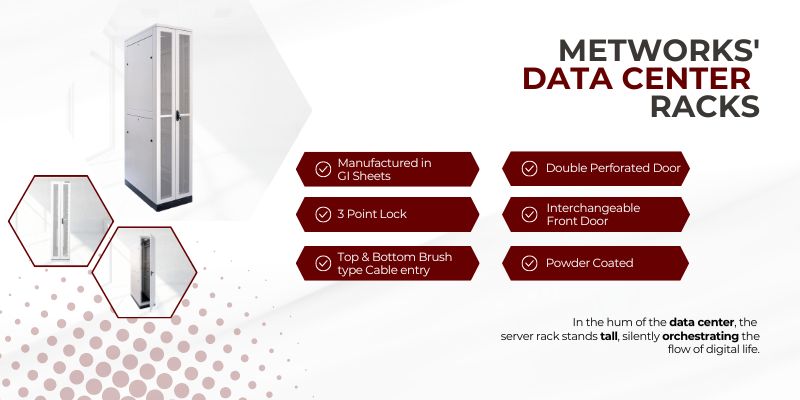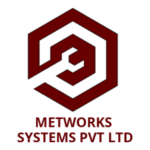In today’s fast-paced digital landscape, data centers are the backbone of many industries, providing the necessary storage, processing power, and network connectivity to support everything from cloud computing to enterprise-level operations. At the heart of every efficient data center lies the data center rack — a key piece of infrastructure that helps to organize, secure, and manage critical IT equipment.
Choosing the right data center rack is essential to maximizing the performance and reliability of your data center. Whether you’re building a new facility or upgrading your existing infrastructure, understanding the role of data center racks and selecting the most suitable solution can make all the difference.
What Is a Data Center Rack?
A data center rack is a physical framework designed to house and organize critical IT equipment such as servers, networking devices, switches, storage units, and power distribution systems. It serves as the structural foundation of any data center environment, ensuring optimal equipment placement, cooling, and cable management. These racks are measured in rack units (U), with each U representing 1.75 inches of vertical space. Typical racks range from 42U to 52U in height, providing ample space for servers and other hardware.
Data center racks come in a variety of configurations, each designed to meet the specific needs of different data center environments. From open-frame designs to fully enclosed racks with advanced cooling options, the right data center rack is crucial for achieving efficiency, scalability, and security.
Why Data Center Racks Matter
Investing in the right data center rack can provide numerous benefits for your IT infrastructure:
1. Space Optimization
One of the primary functions of a data center rack is to maximize the use of available space. By vertically stacking servers, switches, and other hardware, data center racks make it possible to accommodate a large number of devices in a compact area. This space-efficient design is especially important in high-density data centers, where every inch of floor space counts.
2. Effective Cooling and Ventilation
Data center environments generate significant heat, especially when high-performance servers and storage devices are involved. Poor heat management can lead to equipment failure, reduced performance, and even costly downtime. Data center racks are designed with ventilation in mind, allowing airflow to circulate around the equipment and prevent overheating. Many racks also support advanced cooling systems, such as liquid cooling, to maintain optimal temperatures and improve energy efficiency.
3. Improved Cable Management
Effective cable management is critical to maintaining an organized, efficient data center. Without proper cable organization, you risk network issues, difficult maintenance, and unnecessary downtime. Modern data center racks are designed with cable management features such as trays, grommets, and routing systems that help to keep cables organized and easily accessible.
4. Security and Access Control
Data centers house sensitive and mission-critical equipment that needs to be protected from unauthorized access. Many data center racks come equipped with lockable doors and side panels to prevent tampering or damage. This physical security feature is crucial for maintaining the integrity of your infrastructure and complying with industry standards or regulations.
5. Scalability for Growing Needs
As your organization grows, so does the need for additional storage, computing power, and network capacity. Data center racks are modular and scalable, meaning you can add more units or racks as your requirements expand. This flexibility ensures that your data center can accommodate future growth without costly overhauls or reconfigurations.
Suggested Read: Maximizing Efficiency with Telecom Racks: A Comprehensive Overview
Types of Data Center Racks
There are various types of data center racks available, each offering specific advantages based on your requirements:
1. Open-Frame Racks
Open-frame racks are cost-effective and provide easy access to equipment from all sides. These racks are ideal for environments where security is not a concern, such as controlled-access rooms or smaller data centers. Open-frame racks offer excellent airflow, making them ideal for installations where cooling efficiency is a priority.
2. Enclosed Racks
Enclosed racks offer superior protection and security by providing lockable doors and side panels. These racks are designed to shield equipment from dust, debris, and unauthorized access. Enclosed racks also support better cooling solutions, as they can be paired with advanced airflow management systems and even liquid cooling setups. These are ideal for large-scale data centers or facilities where equipment needs to be protected from external factors.
3. Wall-Mount Racks
For smaller environments with limited floor space, wall-mount racks are an excellent solution. These racks are mounted directly on the wall, saving floor space while still providing the necessary support for essential equipment. Wall-mount racks are commonly used in network closets, retail stores, or small offices that require a compact and efficient setup.
Key Considerations for Choosing the Right Data Center Rack
Selecting the best data center rack for your facility depends on a few critical factors:
1. Size and Space Requirements
Before purchasing a data center rack, it’s essential to assess the size and space requirements of your facility. Consider how much equipment you need to house, the height and width of the available space, and whether future expansion will be necessary.
2. Weight Capacity
Ensure that the rack you choose can support the weight of your equipment. Most racks are rated to handle specific load capacities, so be sure to select a rack that can accommodate your current and future equipment needs without compromising safety.
3. Cooling Requirements
Cooling is a critical factor in any data center environment. If your data center operates high-performance equipment, you may require racks with advanced cooling features, such as perforated doors, built-in fans, or compatibility with liquid cooling systems.
4. Security Needs
If your equipment needs to be protected from unauthorized access, look for data center racks with enhanced security features, such as lockable doors, tamper-proof panels, and advanced access control systems.
Why Metworks for Your Data Center Racks?
At Metworks Systems, we understand the importance of reliable, high-quality data center racks in building a robust and efficient IT infrastructure. Our range of data center racks is designed to meet the unique needs of modern data centers, ensuring optimal space utilization, cooling, cable management, and security. Whether you’re managing a small server room or a large-scale data center, Metworks has the right solution to help you maximize your infrastructure’s performance and longevity.


